Day 3
Today we’ll take a radial trip from Copenhagen. The easiest option is to follow the road that runs close to the sea toward Helsingør, known in English as Elsinore, which, thanks to Shakespeare, entered the collective memory of the reading world as the name of the castle where the action of “Hamlet” unfolds.
Just 2 km from the town — which is 45 km from Copenhagen — is Kronborg, Hamlet’s Castle. This is the very castle referred to in the play as Elsinore. And although historians and Shakespearean scholars insist that Hamlet is a fictional character and that Kronborg has nothing to do with the events depicted in the play — even if those events were real — it’s hard to be in Denmark and not visit “Hamlet’s Castle.” Only the most principled travelers might resist. Besides, this 16th-century castle is one of the most majestic Renaissance castles in Europe and is a UNESCO World Heritage Site.
The castle is indeed impressive, but its interiors, destroyed by a fire in 1629, were never fully restored, which somewhat diminishes the value of visiting. Highlights include the chapel with its splendid Renaissance decorations, spared by the fire; the richly decorated royal apartments; and the ballroom — one of the longest in Northern Europe — with a beautiful marble floor. From the kitchen, a passage leads to the casemates, where stands the statue of Holger Danske — a mythical figure who, according to legend, sleeps beneath the castle and will awaken when Denmark is in danger to lead its army and save the country.
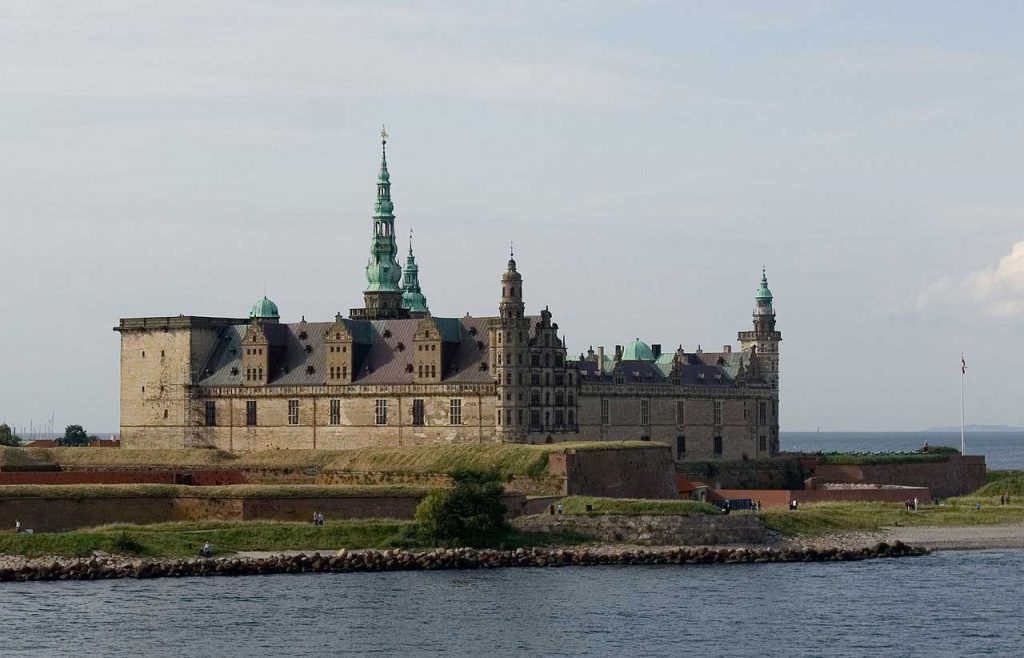
Photo by Fiskfisk. Own work, Public domain, https://commons.wikimedia.org/w/index.php?curid=2605757
I couldn’t resist walking down to the seashore and standing by the Øresund Strait (in Sweden it’s Öresund), which connects the Kattegat and Skagerrak — straits with melodious names that I remember from geography lessons. Back in 1992, things like this still thrilled me. The Øresund is only 4 km wide here, and you can see Sweden from the shore.
Not far from the castle is the Danish Maritime Museum, which showcases the history of the Danish navy from the Renaissance to the present day. On the way to Helsingør, you’ll pass (or stop at) the Louisiana Museum of Modern Art in the town of Humlebæk, on the shores of the Øresund. The museum’s permanent collection includes over 3,000 works by renowned 20th-century artists such as Pablo Picasso, Alberto Giacometti, Yves Klein, Andy Warhol, Henry Moore, Francis Bacon, and many others. One of the most fascinating parts of the collection is the section dedicated to Russian avant-garde artists. The museum takes its name from a large house built on this site by royal gamekeeper Alexander Brun, who named it “Louisiana” after his three wives, all of whom were named Louise.

If you have time left, you can make a detour and stop by Frederiksborg Castle (Frederiksborg Slot) on the way back to Copenhagen. It sits on three small islands in the Castle Lake in the town of Hillerød. The castle was built by King Christian IV in the early 17th century and is the largest Renaissance building in Northern Europe. Since 1878, the castle has housed the Museum of National History, which tells the story of 500 years of Danish history through portraits, historical paintings, furniture, and decorative arts. The castle is beautiful, the museum is interesting, and the grounds are pleasant — Frederiksborg is well worth a visit. If you don’t have time now, consider coming here on your departure day from Copenhagen.

Another, more complex, day trip option from Copenhagen is to cross the Øresund via the Øresund Bridge-Tunnel — an attraction in itself — and enter Sweden. The road to Sweden begins near Copenhagen Airport (Kastrup), dives underground, emerges on a 4-kilometer man-made island, and then continues over the bridge. The whole trip takes about 45–60 minutes and costs 360 Danish kroner (around €50) one way. The bridge ends in the suburbs of Malmö — Sweden’s third-largest city, which offers plenty to see.

Photo by Nick-D.
The main square in Malmö’s Old Town, Stortorget, dates back to the 1530s. At its center stands an equestrian statue of King Charles X Gustav, who in 1658 wrested the province of Scania — where Malmö is located — and two other provinces from Denmark. On the east side of the square stands the old town hall (Rådhus) from 1546, built in Dutch Renaissance style. On the north side is the governor’s residence (Residenset) from the early 17th century. The imposing stepped-roof building from 1523, known as Jörgen Kock’s House, belonged to a powerful mayor and mint master.
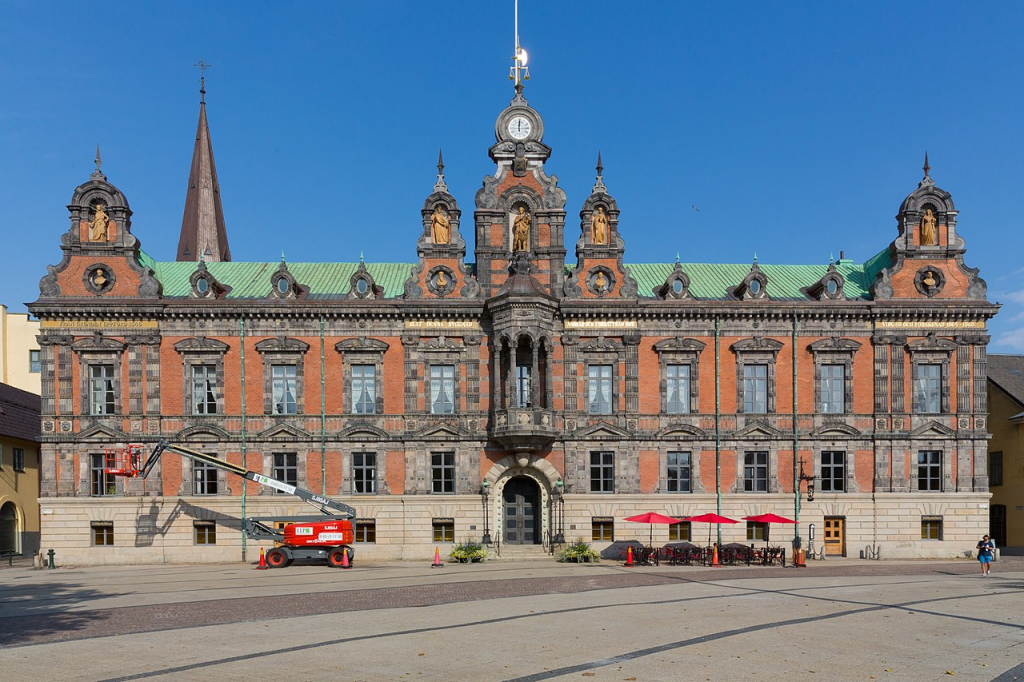
Photo by Liberaler Humanist – Own work, CC BY-SA 3.0, https://commons.wikimedia.org/w/index.php?curid=94678879
On the small and cozy Lilla Torg square near Stortorget, you can still find half-timbered buildings from the 16th to 18th centuries. The Kockska huset, built in 1524 by the mayor for himself, is the second oldest building in the city. In Malmö, you can also see an Art Nouveau synagogue, the 54-story “Turning Torso” skyscraper by renowned Spanish architect Santiago Calatrava, standing 190 meters tall, and a fortress.
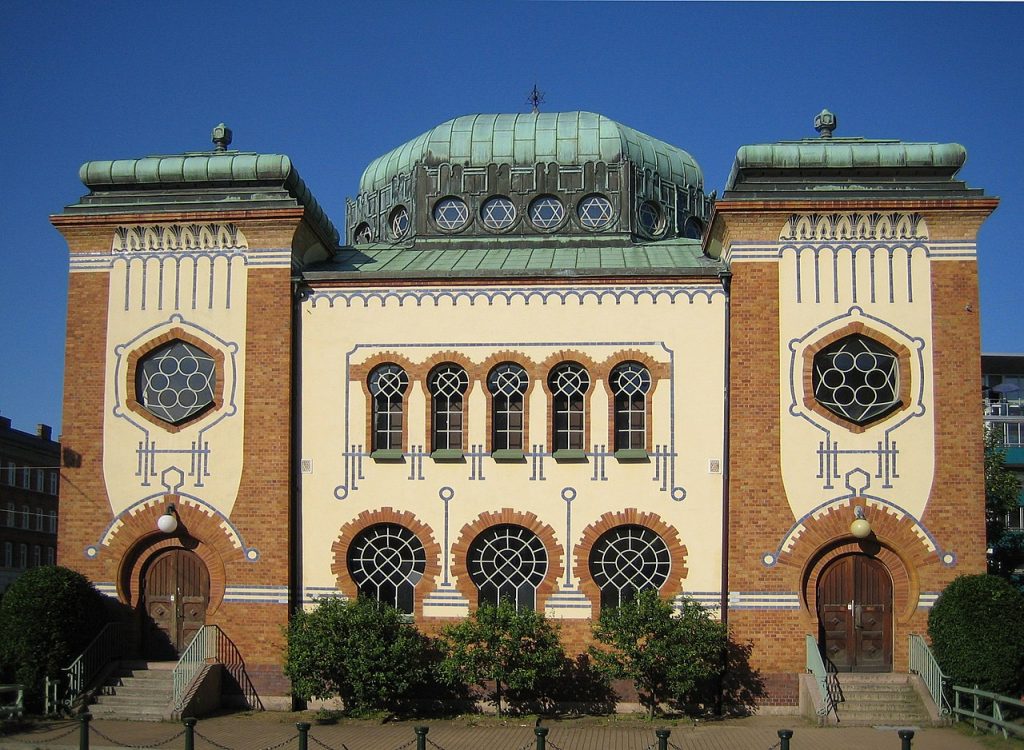
Photo jorchr – Self-photographed, CC BY-SA 3.0, https://commons.wikimedia.org/w/index.php?curid=2219813
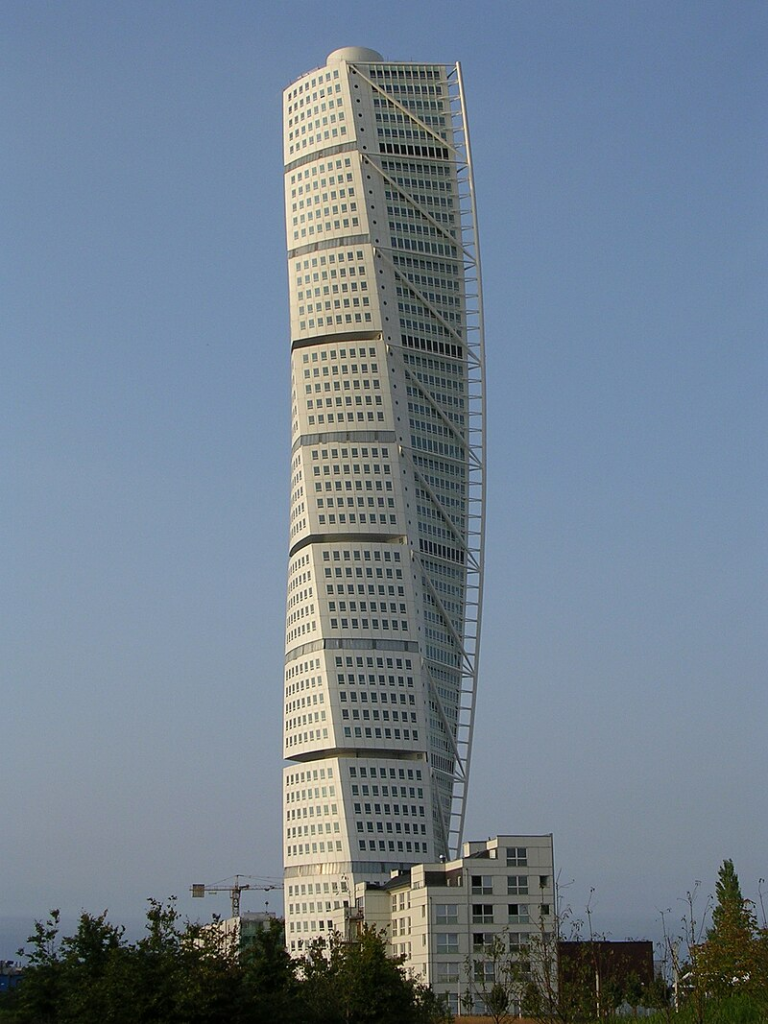
Photo by Väsk – Own work, CC BY-SA 3.0, https://commons.wikimedia.org/w/index.php?curid=350111
If time allows, you can also take a trip to the old town of Lund to see the 12th-century Romanesque cathedral—one of the most significant Romanesque buildings in the Nordic countries—and stroll through the town’s cobblestone streets. To return to Copenhagen, you can drive about 60 km to Helsingborg and take a ferry across to Helsingør on the opposite shore. While there, you might also want to take a look at Kronborg Castle.
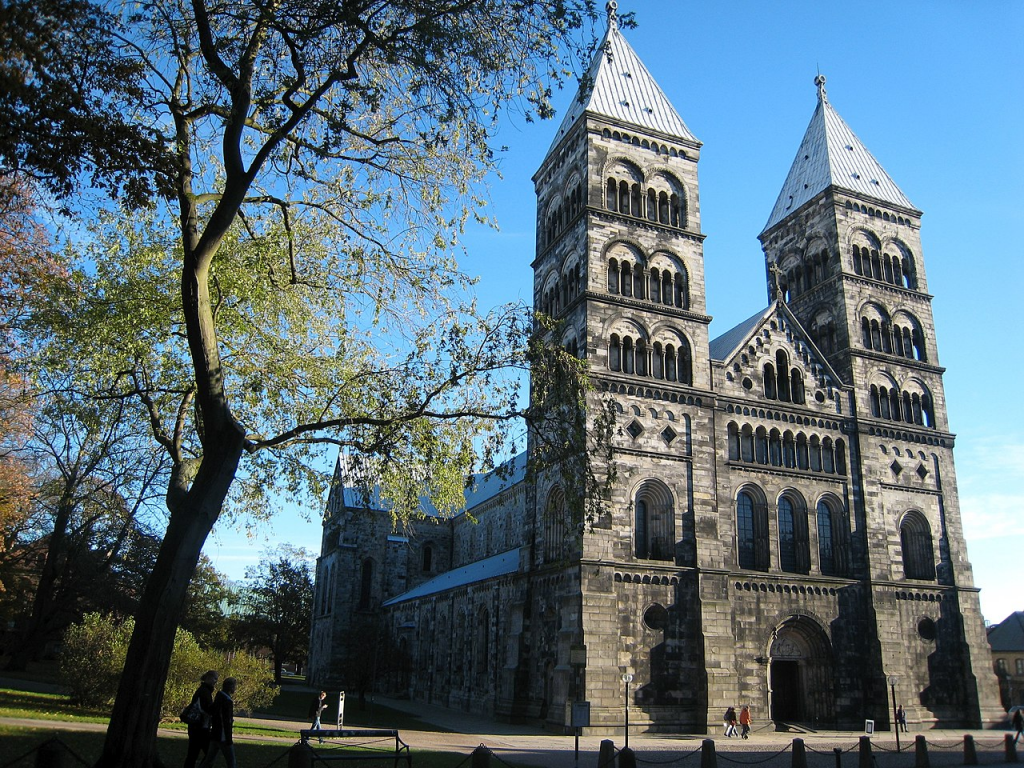
Photo by Kallekn – Own work, CC BY-SA 3.0, https://commons.wikimedia.org/w/index.php?curid=4061097
This trip is interesting but quite costly, since in addition to bridge and ferry fees, those renting a car in Denmark must also pay in advance, at the time of rental, for crossing the border (such are the times now).
Just 15 kilometers from Copenhagen lies Frilandsmuseet, one of the world’s largest open-air museums, often called a “skansen” after the famous museum in Stockholm. Here, rural Denmark of the past has been recreated. Spread across about 36 hectares, the museum features village buildings brought in from different regions of Denmark. All furnishings are authentic, and on the streets, you’ll find blacksmiths, weavers, and potters demonstrating their crafts, geese and ducks running around, livestock roaming freely, women washing clothes in vats, and a baker kneading dough—a real time machine.
Day 4
We leave Copenhagen. If you’ve already visited Frederiksborg, head west to the city of Roskilde. The local Cathedral of Saint Lucius from the 11th–13th centuries is the most important medieval structure in Denmark (a UNESCO World Heritage Site), built in the distinctive style of North German brick Gothic cathedrals. This is Denmark’s main cathedral and the royal burial site of Danish monarchs.

Photo Kåre Thor Olsen – Own work, CC BY-SA 3.0, https://commons.wikimedia.org/w/index.php?curid=186062
The walls of the eastern part of the cathedral are richly decorated with early 16th-century frescoes, showing what King Harald Bluetooth, King Canute’s sister Estrid, King Sweyn Estridsson, and his close friend Bishop Wilhelm really looked like. All these people were directly involved in the construction of the cathedral and were among the first to be buried here. They died long before the cathedral was finished and were later reburied here.
Inside the cathedral, look for the 15th-century mechanical clock—one of a kind. On the left, there’s a figure of Saint George who, according to legend, killed a terrible dragon that was terrorizing a city in Asia Minor. Exactly at noon, Saint George’s horse jumps toward the dragon, the dragon lets out a dreadful scream, the clock strikes twelve, and a female figure nods in time with the strikes. Every hour, Saint George thrusts his sword into the dragon, which howls in agony. The dragon’s roar comes from an organ located next to the clock.
In addition to the cathedral, Roskilde is home to the Viking Ship Museum, which displays five ancient seafarers’ boats found during excavations in the area. The museum is located on the fjord’s shore. If time permits, you can visit Vallø Castle (Vallø Stift) from the 14th century about 50 km south of Copenhagen. This majestic red-brick structure has two massive corner towers—one square, one round—and many smaller turrets, attics, and spires.
From Roskilde, head south along Ringstedvej, which becomes the E20 highway, and leave the island of Zealand, where Copenhagen is located. In Danish, it’s called Sjælland. Cross the long bridge to the island of Funen (Fyn) and continue to its main city, Odense—the hometown of fairytale author Hans Christian Andersen. Untill several years ago this crossing could be done only by ferry.
In Odense, you can visit Andersen’s house in the old part of town, the Gothic St. Canute’s Cathedral (Sankt Knuds Kirke) from the early 14th century, the beautiful neo-Gothic St. Alban’s Church from the early 20th century, the town hall, and the square in front of it. After that, we continue our journey; one more bridge, and we reach the Jutland (Jylland) Peninsula .
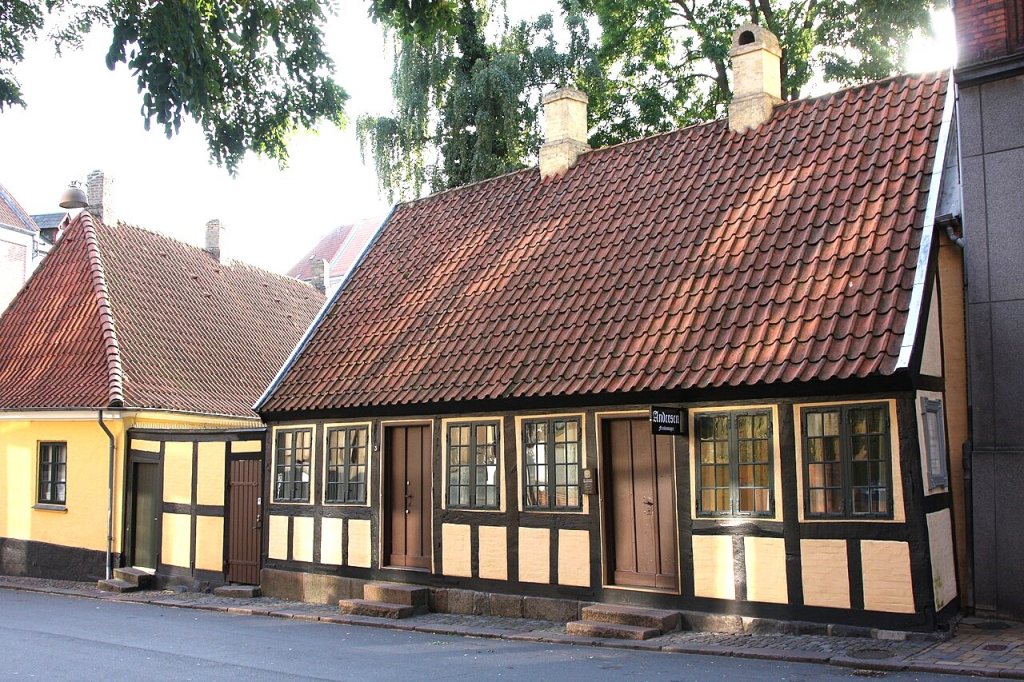
Photo Kåre Thor Olsen – Own work

Photo CC BY-SA 3.0, https://commons.wikimedia.org/w/index.php?curid=661770
If it’s time for an overnight stop, you can do so in the city of Vejle off the highway. While there, you can see the wave-shaped line of buildings known as “The Wave” and a nice town hall. Just 11 km north of Vejle, in the town of Jelling, there are two massive rune stones from the time of Denmark’s first king—the Viking Gorm the Old (10th century). The stones are placed at the entrance of a 12th-century church, standing between two ancient burial mounds. The two mounds and the rune stones, together with the church at King Gorm’s burial site, are UNESCO World Heritage Sites.

Photo Casiopeia, CC BY-SA 2.0 de, https://commons.wikimedia.org/w/index.php?curid=197294
From Vejle, we head to Aarhus (also spelled Århus), Denmark’s second-largest city. The Aarhus Cathedral (Domkirke) is the longest (93 m) and tallest (96 m) church in the country, able to accommodate 1,200 people.
Construction of Aarhus Cathedral began in 1190 and was completed in 1300. It is dedicated to St. Clement of Rome, the patron saint of sailors. The facade of the Aarhus City Theatre is also very beautiful, adorned with a panel depicting a scene from a play. Aarhus also offers tourists Den Gamle By (literally “The Old Town”)—an open-air museum, and one of the most picturesque of its kind in Denmark.
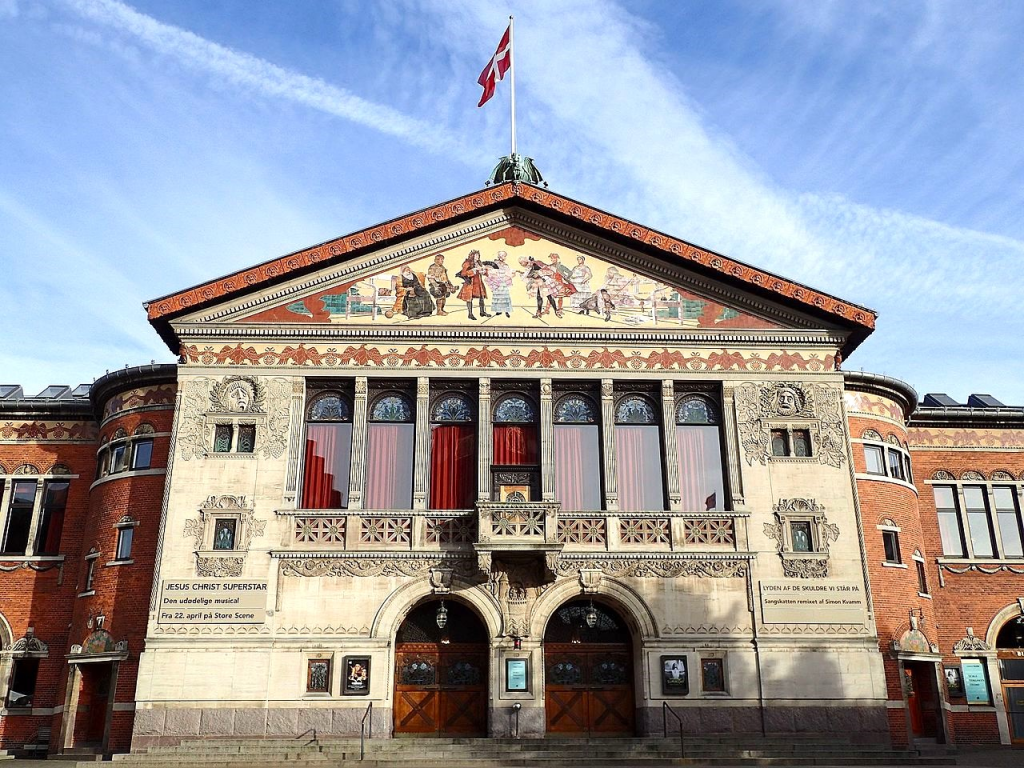
Photo RhinoMind. Own work, CC BY-SA 4.0, https://commons.wikimedia.org/w/index.php?curid=59293076
Den Gamle By was founded in 1909, and today it has 75 historic buildings from the 17th–19th centuries, moved here from 20 towns across the country. These buildings line cobbled streets, where “residents” dressed in historical costumes stroll, and horse-drawn carriages pass by. There’s a small harbor, old mills, workshops, and shops—all fully operational. No one lives here permanently, but during the day the town is “populated” and maintained by museum staff in period clothing. A few years ago, the museum ranked among the top three most popular attractions in Denmark.
After exploring Aarhus, we head northeast and after about 40 km, turn right toward the old port town of Ebeltoft—a very popular spot among local tourists who crowd its picturesque streets during vacation season. Because of its popularity, finding a place to stay overnight here can be difficult. At dusk, a performance by the local guard is held at the old town hall (which, according to locals, is the smallest town hall building in the world).

Photo CC BY-SA 3.0, https://commons.wikimedia.org/w/index.php?curid=277173
Day 5
Heading further north from Ebeltoft, we pass through Randers, another charming old Danish town. While it may not be rich in landmarks, however, since you’re already here, take a look at the beautiful half-timbered house of Councilor Niels Obel from 1643 on the 100-meter-long Storegade street, and the modernist “Chapel for the Present Time” (Kapel til Nutiden), one of several large ceramic sculptures scattered throughout the city. By the way, Randers has an Elvis Presley museum.
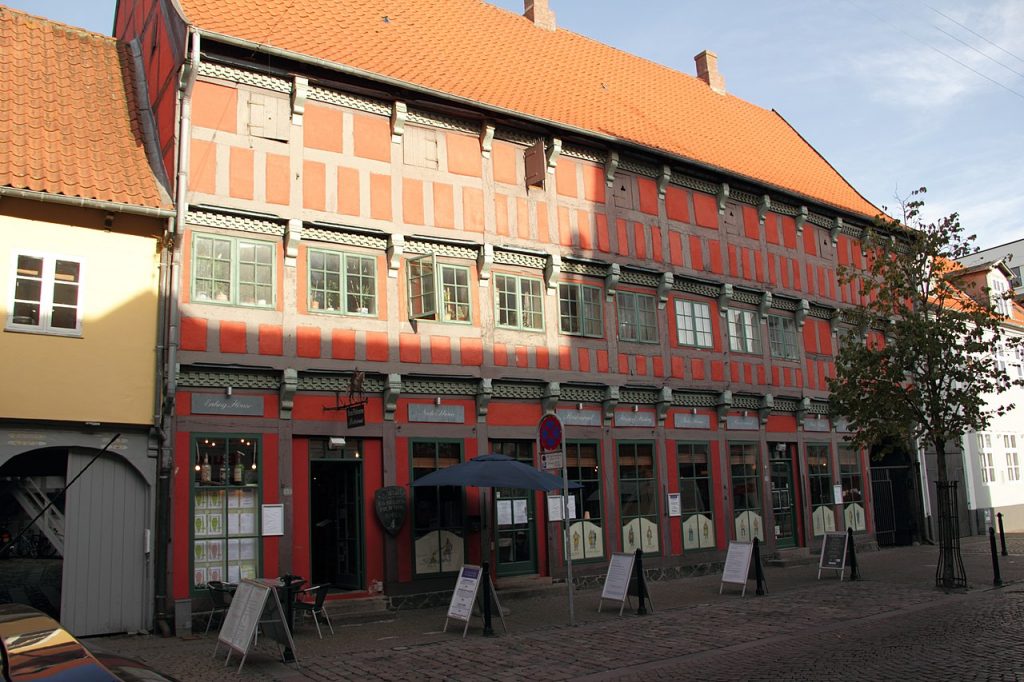
Photo by Rene Jensen – Own work, CC BY-SA 3.0, https://commons.wikimedia.org/w/index.php?curid=16816495
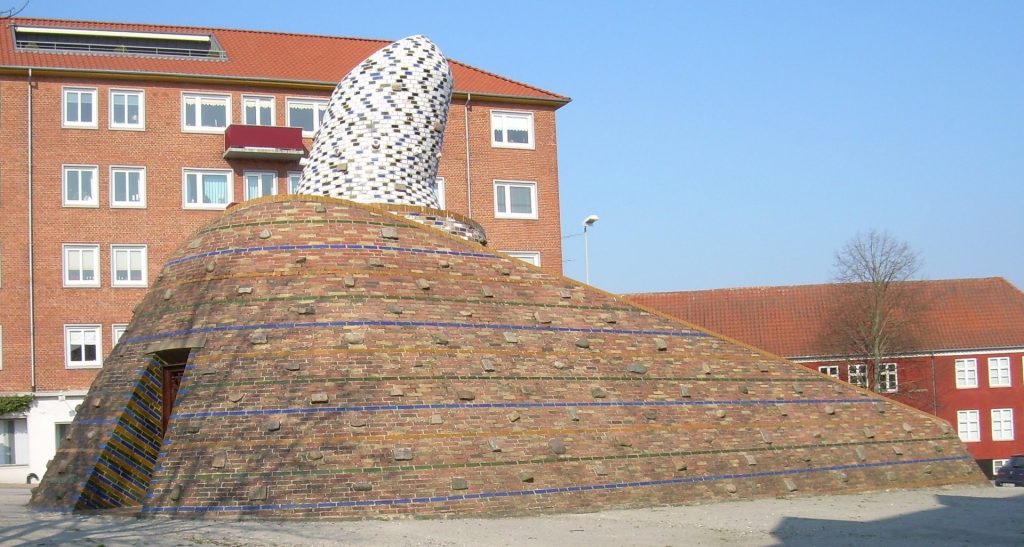
Photo Wegge at Danish Wikipedia – Transferred from da.wikipedia to Commons.
We then continue north. Leaving Randers, we take the road called Mariagervej, which leads to the town of Mariager. This route is worth taking if you’re ready for a meal, as along the way you’ll find one of Denmark’s most popular inns, Hvidsten Kro. The address is Mariagervej 450.
After your meal, continue on to Aalborg (also spelled Ålborg)—a pleasant city worth strolling through, especially along Østerågade street, where you’ll find two very interesting buildings at numbers 9 (Jørgen Olufsen’s House) and 25 (Jens Bang’s House). The latter is actually located on the beautiful central square, Nytorv, which translates to New Market.
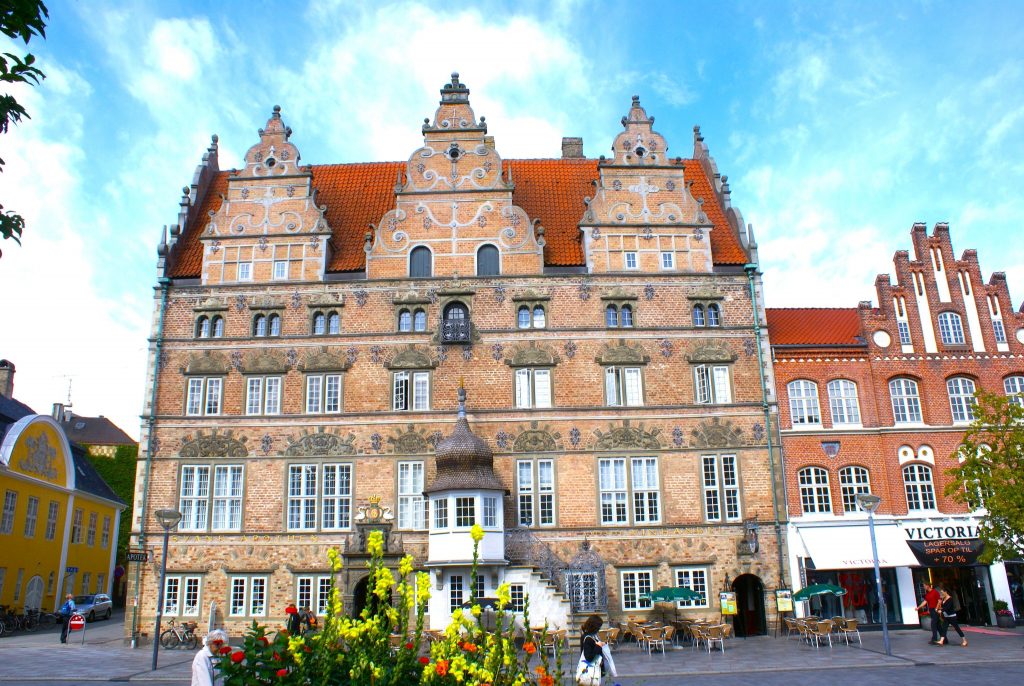

Photo Tomasz Sienicki (tsca), CC BY 2.5, https://commons.wikimedia.org/w/index.php?curid=1363
If leaving Aalborg you plan to head to Norway, there are two options. The first is to go to Frederikshavn, from where an overnight ferry takes you to Oslo in 10 hours. If you’re not rushing to attend the Nobel Peace Prize ceremony, you can take a detour to the 30-kilometer Skagen Odde sand spit (88 km round trip from Frederikshavn). The second option is to go to Hirtshals, from where you can ferry to Kristiansand, Larvik, or Oslo (the trip to Oslo from here takes 12.5 hours but is cheaper than from Frederikshavn).
If Norway is not your immediate destination, head from Aalborg south to the town of Viborg, known for its 12th-century cathedral. There you can stroll through the narrow, steep streets of the Old Town, and then continue to Silkeborg. From Silkeborg, a chain of lakes stretches to the southeast—one of the Danes’ favorite summer vacation spots, where you too can take a break. Nearby rises one of the highest points in this otherwise flat country—Mount Himmelbjerget (meaning “Sky Mountain”), with an impressive height of 147 meters, which you can climb.
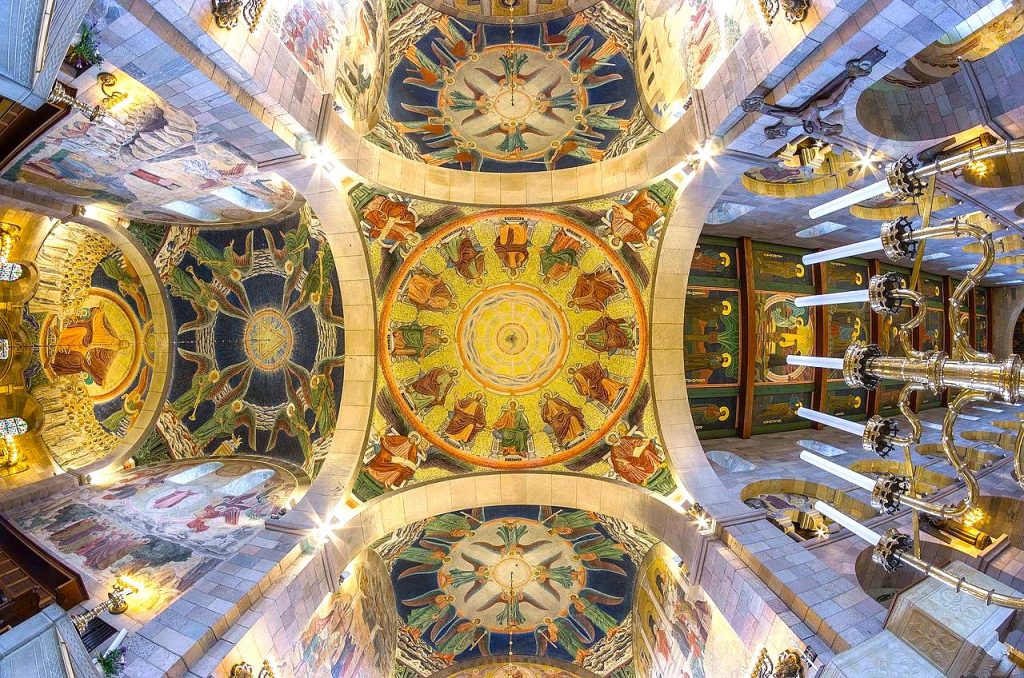
Photo Colin / Wikimedia Commons, CC BY-SA 4.0, https://commons.wikimedia.org/w/index.php?curid=60046283
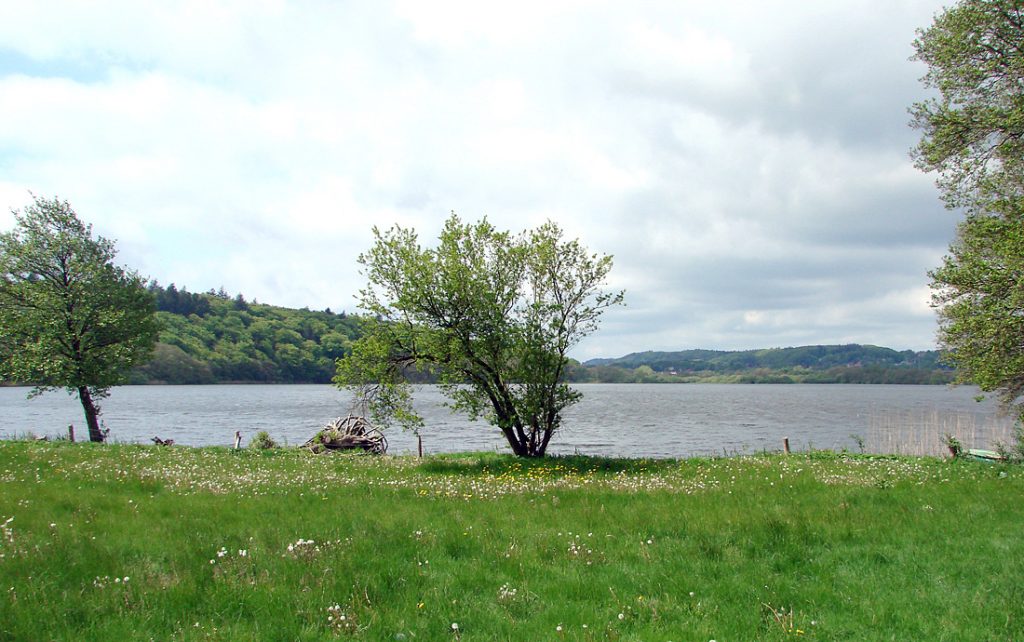
Photo: user:Nico-dk /Nils Jepsen. Own work, CC BY 2.5, https://commons.wikimedia.org/w/index.php?curid=2108042
From the lakes, drive 125 km south to the town of Ribe, considered one of the most fascinating old towns in Denmark (featuring a Romanesque 12th-century cathedral and a medieval Old Town around it). Along the way, If you’re traveling with kids—or just enjoy such things yourselves—you can stop in Billund at the famous (and the first) LEGOLAND theme park.
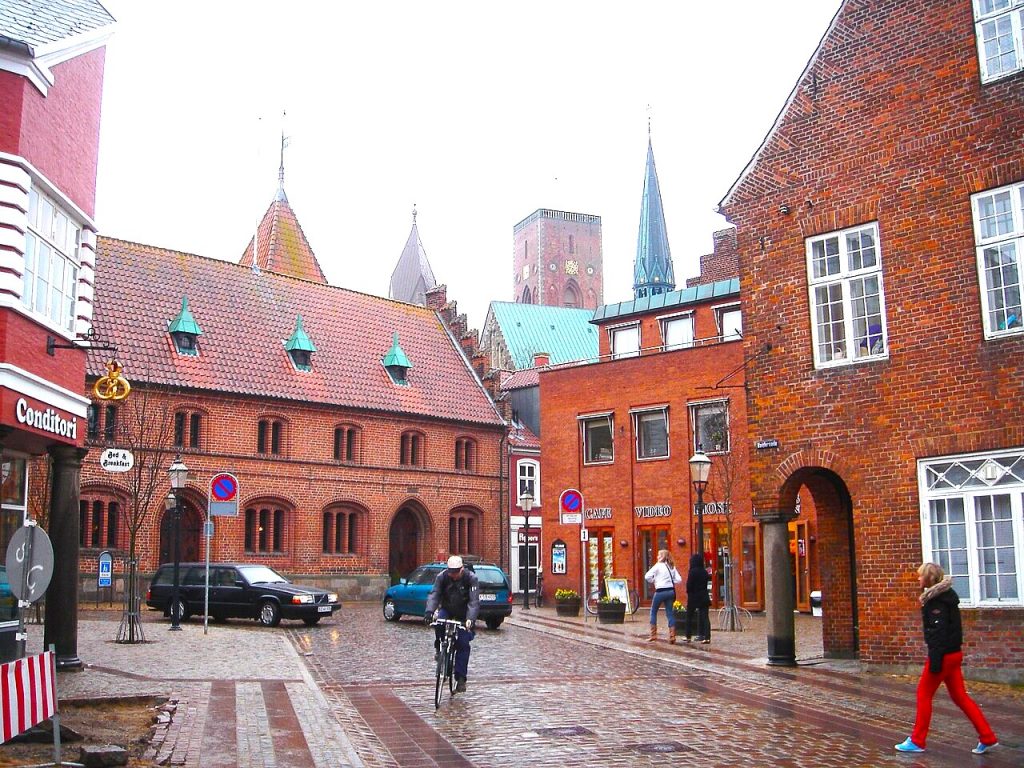
Photo: User Bordeaux on de.wikipedia. Own work, CC BY-SA 3.0, https://commons.wikimedia.org/w/index.php?curid=909433
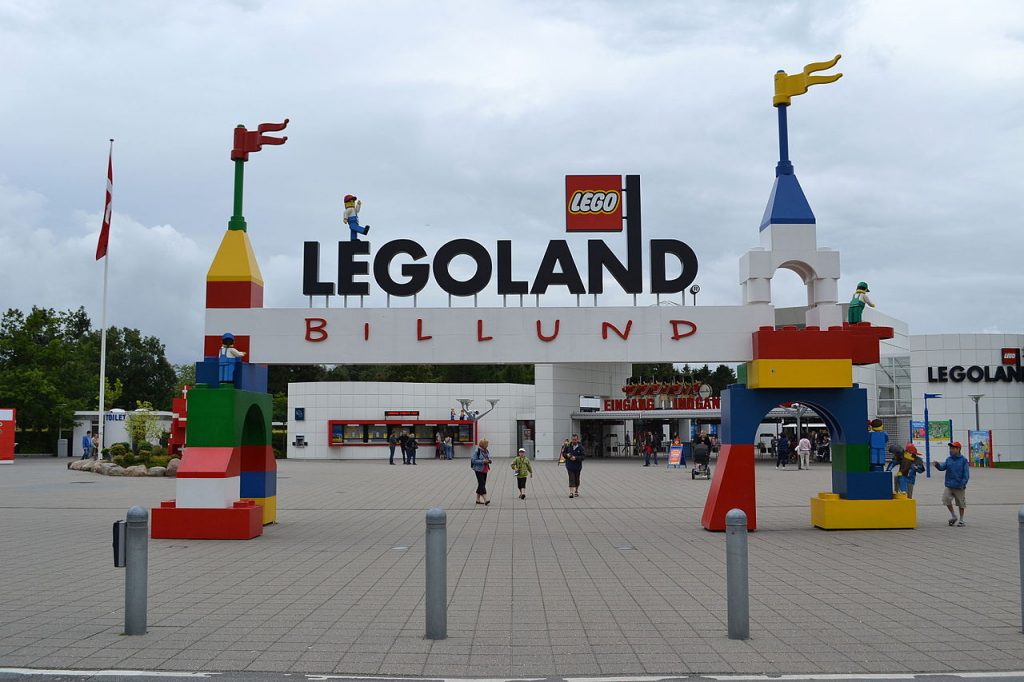
Photo MPD01605 from Sterling, Virginia, United States. Legoland Billund, CC BY-SA 2.0, https://commons.wikimedia.org/w/index.php?curid=42603580
Today, it is the largest LEGOLAND in the world, built with over 46 million LEGO bricks of various sizes. The park covers an area of approximately 100,000 square meters and is divided into several themed zones, including Adventure Land—where I once had the soul shaken out of me by dizzying roller coaster. There is also a wonderful toy museum, including some remarkable dollhouses.
From Ribe, you can either continue on to Germany or return to Copenhagen (280 km).

